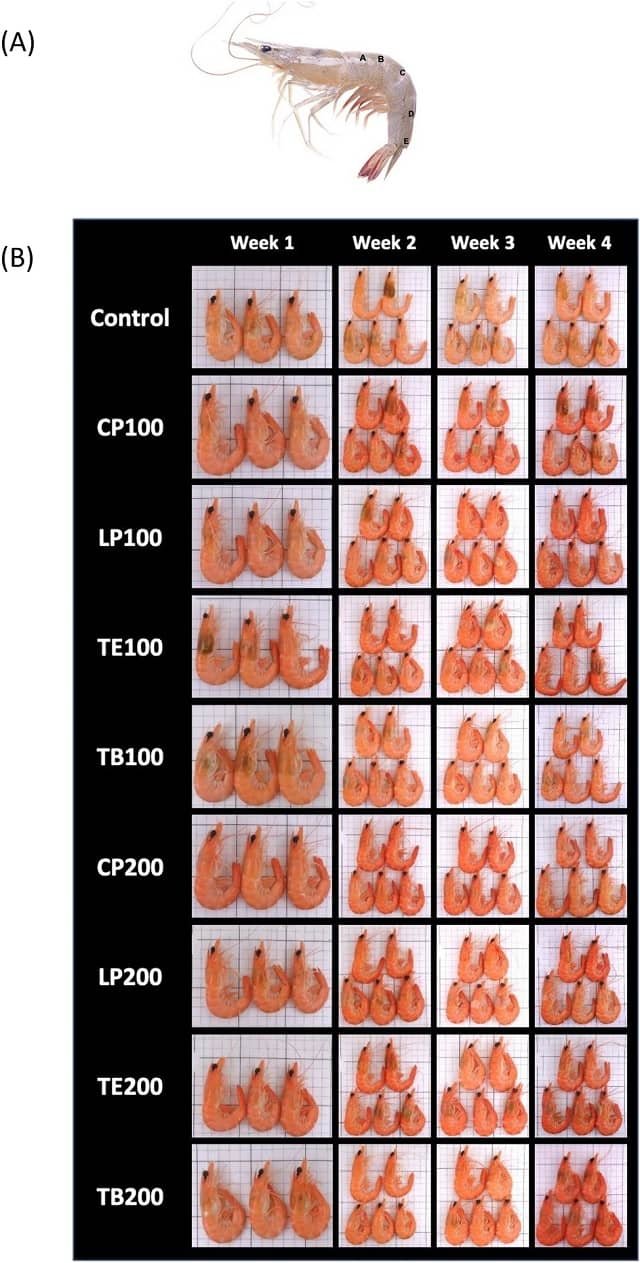
Previous studies have shown that ammonia exposure has toxic effects on the white shrimp Litopenaeus vannamei, including tissue damage, oxidative stress, and metabolic disorders. However, the ability of L. vannamei to recover from ammonia-induced damage has not been clear.
A study published by scientists from Guangdong Ocean University in the journal Aquatic Toxicology explores the effects of ammonia exposure and recovery on histopathology, physiological indicators, and transcriptomic responses to better understand the adaptation mechanism of L. vannamei to ammonia.
The silent threat of ammonia in aquaculture
- 1 The silent threat of ammonia in aquaculture
- 2 Histopathological and physiological effects of ammonia exposure
- 3 Reversibility of ammonia-induced inhibition of enzymatic activities
- 4 Ammonia excretion and metabolism: a key to recovery
- 5 Transcriptome analysis provides insights into ammonia-induced oxidative damage and recovery
- 6 Potential role of exogenous compounds in enhancing ammonia acclimation
- 7 Implications for the shrimp industry
- 8 Conclusion
- 9 Entradas relacionadas:
Ammonia, a common byproduct of aquatic animal metabolism and the decomposition of organic matter, poses a significant threat to the health and productivity of aquaculture systems.
In intensive aquaculture, where high stocking densities and overfeeding can lead to elevated ammonia levels, this contaminant can have detrimental effects on the physiology and behavior of aquatic organisms.
Ammonia exposure can cause liver, gill, and other tissue damage, and prolonged exposure can lead to oxidative stress, apoptosis, and reduced immunity. The main forms of ammonia found in water are NH3 and NH4+, with NH3 being more toxic due to its high lipophilicity. Temperature, salinity, and pH significantly influence NH3 concentration, making it essential to monitor these factors in aquaculture systems.
Histopathological and physiological effects of ammonia exposure
According to previous studies, exposure to high ammonia concentrations can disrupt various physiological processes in shrimp, including:
- Oxidative stress: Ammonia can induce the production of reactive oxygen species (ROS), leading to cellular damage and impaired immune function.
- Metabolic dysfunction: Ammonia can interfere with energy metabolism, growth, and reproduction.
- Tissue damage: Prolonged ammonia exposure can cause injuries to vital organs such as the liver and gills.
- Impaired immunity: Ammonia can suppress the immune system, making shrimp more susceptible to disease.
The study results showed that short-term ammonia exposure caused histopathological damage to the hepatopancreas and gills, which was alleviated after recovery. Ammonia exposure also inhibited the activities of superoxide dismutase (SOD) and catalase (CAT), decreased total antioxidant capacity (T-AOC), and increased malondialdehyde (MDA) levels in the shrimp. However, restoration of the antioxidant system after exposure mitigated oxidative damage and reduced MDA levels.
Reversibility of ammonia-induced inhibition of enzymatic activities
We found that the inhibition of acid phosphatase (ACP) and alkaline phosphatase (AKP) activities caused by ammonia exposure was reversible. This suggests that the shrimp’s ability to recover from ammonia exposure is linked to the restoration of enzymatic activities.
Stay Always Informed
Join our communities to instantly receive the most important news, reports, and analysis from the aquaculture industry.
Ammonia excretion and metabolism: a key to recovery
Our study demonstrated that ammonia excretion and metabolism play a crucial role in mitigating ammonia toxicity and promoting recovery in L. vannamei. This highlights the importance of understanding ammonia metabolism mechanisms in shrimp and the potential use of exogenous compounds to enhance ammonia acclimation.
Transcriptome analysis provides insights into ammonia-induced oxidative damage and recovery
Transcriptome analysis identified 1,690, 1,568, and 1,463 differentially expressed genes (DEGs) in the hepatopancreas at 48 hours of stress, 24 hours, and 48 hours of recovery, respectively. KEGG enrichment analysis revealed that ammonia exposure induced oxidative damage, resulting in apoptosis. Moreover, activation of antioxidant-related pathways, such as glutathione metabolism and peroxisomes, helped reduce oxidative damage during the post-exposure recovery period.
Potential role of exogenous compounds in enhancing ammonia acclimation
The study suggests that the addition of exogenous spermine and spermidine may aid post-exposure recovery and improve ammonia acclimation in L. vannamei. This underscores the potential for using exogenous compounds to enhance shrimp tolerance to ammonia exposure.
Implications for the shrimp industry
The study provides valuable insights into the resilience of L. vannamei to ammonia stress. Understanding the underlying recovery mechanisms can help develop strategies to improve shrimp health and productivity in aquaculture.
By elucidating these mechanisms, scientists can develop strategies to enhance shrimp resilience to ammonia stress and improve the sustainability of aquaculture practices. For example, selective breeding programs could be used to identify and propagate individuals with superior ammonia tolerance. Additionally, water quality management practices, such as regular water exchange and biofiltration, can help minimize ammonia buildup in aquaculture ponds.
Conclusion
In conclusion, our study demonstrated the reversibility of ammonia exposure’s toxic effects in the white shrimp L. vannamei and provided insights into the shrimp’s adaptation mechanisms to ammonia exposure. The findings of this study have implications for developing strategies to improve shrimp tolerance to ammonia exposure and enhance their ability to recover from ammonia-induced damage.
Contact
Jianyong Liu
College of Fisheries, Guangdong Ocean University
Zhanjiang, 524088, China
Email: liujy70@126.com
Reference
Lin, L., Zhuo, H., Zhang, Y., Li, J., Zhou, X., Wu, G., Guo, C., & Liu, J. (2024). Effects of ammonia exposure and post-exposure recovery in pacific white shrimp, Litopenaeus vannamei: Histological, physiological and molecular responses. Aquatic Toxicology, 277, 107133. https://doi.org/10.1016/j.aquatox.2024.107133
Editor at the digital magazine AquaHoy. He holds a degree in Aquaculture Biology from the National University of Santa (UNS) and a Master’s degree in Science and Innovation Management from the Polytechnic University of Valencia, with postgraduate diplomas in Business Innovation and Innovation Management. He possesses extensive experience in the aquaculture and fisheries sector, having led the Fisheries Innovation Unit of the National Program for Innovation in Fisheries and Aquaculture (PNIPA). He has served as a senior consultant in technology watch, an innovation project formulator and advisor, and a lecturer at UNS. He is a member of the Peruvian College of Biologists and was recognized by the World Aquaculture Society (WAS) in 2016 for his contribution to aquaculture.



